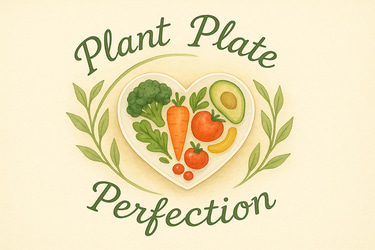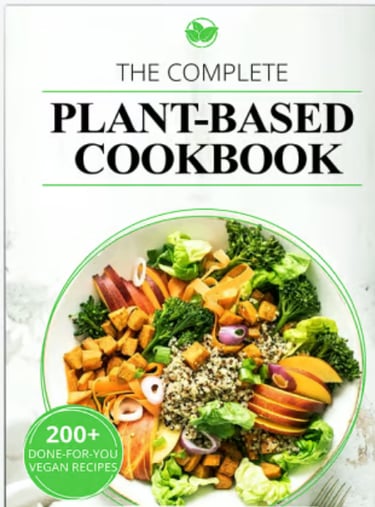Vegan Bibimbap: A Colorful, Flavor-Packed Korean Bowl
VEGAN RECIPES
10/1/20253 min read
Vegan Bibimbap: A Colorful, Flavor-Packed Korean Bowl
Craving a vibrant, healthy, and downright delicious meal? This Vegan Bibimbap (비빔밥) is a Korean classic that’s bursting with flavor, texture, and color! Featuring fluffy rice, sautéed veggies, marinated tofu, and a spicy gochujang sauce, this plant-based version is as satisfying as it is beautiful. Ready in about 40 minutes, it’s perfect for a fun dinner or meal prep for 3–4 servings. Let’s dive into this bowl of Korean goodness that’ll have you saying, “Eat more!”
Why You’ll Love This Vegan Bibimbap
Vibrant and balanced: A mix of tender rice, crisp veggies, savory tofu, and spicy sauce creates a perfect harmony of flavors and textures.
Vegan and customizable: Plant-based and easy to adapt with your favorite veggies or proteins.
Healthy and satisfying: Packed with nutrients from colorful veggies and protein-rich tofu.
Fun to assemble: Build your bowl just the way you like it for a meal that’s as pretty as it is tasty.
Quick and flavorful: Ready in under an hour, with bold Korean flavors that don’t disappoint.
Ingredients You’ll Need (Serves 3–4)
For the Rice
1 part rice (short-grain white or brown rice works best), washed
2 parts water
Pinch of salt
For the Veggies
3 large carrots, finely chopped or julienned
400g mushrooms (shiitake, cremini, or button), finely chopped
200g chard or spinach, finely chopped
1 tbsp oil (for frying)
Salt and pepper, to taste
½ cucumber, thinly sliced
1 tbsp soy sauce
1 tbsp agave syrup
2 tsp vinegar (rice vinegar preferred)
1 tsp chili flakes
For the Tofu
200g firm tofu, cubed or sliced
1 tbsp sesame oil
2 tbsp soy sauce
2 cloves garlic, minced
For the Gochujang Sauce
2 tbsp gochujang (Korean red chili paste)
1 tbsp sesame oil
1 tbsp water
1 tbsp sugar
1 tsp vinegar (rice vinegar or apple cider vinegar)
½ tsp garlic powder
1 tbsp sesame seeds
Step-by-Step Instructions
Cook the rice: Rinse the rice thoroughly until the water runs clear. In a pot, combine 1 part rice, 2 parts water, and a pinch of salt. Bring to a boil, then reduce to low heat, cover, and cook for 15–20 minutes until fluffy. Set aside and keep warm.
Prepare the veggies: Heat 1 tbsp oil in a large skillet over medium heat. Add the finely chopped carrots, mushrooms, and chard or spinach, and sauté for 5–7 minutes until tender. Season with salt and pepper to taste. Remove from the pan and set aside.
Marinate the cucumber: In a small bowl, mix the sliced cucumber with 1 tbsp soy sauce, 1 tbsp agave syrup, 2 tsp vinegar, and 1 tsp chili flakes. Toss to coat and set aside to pickle slightly.
Marinate and cook the tofu: In a bowl, whisk together the sesame oil, soy sauce, and minced garlic. Add the tofu cubes and toss to coat. Let marinate for 30 minutes (or 10 minutes if you’re short on time). Heat a skillet over medium heat with a drizzle of oil, then fry the tofu for 4–5 minutes, turning occasionally, until golden and slightly crispy. Set aside.
Make the gochujang sauce: In a small bowl, whisk together the gochujang, sesame oil, water, sugar, vinegar, garlic powder, and sesame seeds until smooth and well combined.
Assemble the bowls: Divide the cooked rice among 3–4 bowls. Arrange the sautéed veggies, marinated cucumber, and fried tofu in neat sections over the rice. Drizzle generously with the gochujang sauce, or serve it on the side for dipping. Garnish with extra sesame seeds or chopped scallions, if desired.
Serve and enjoy: Mix everything together before eating for the full bibimbap experience, or enjoy the components separately. Dig in and savor the flavors!
Tips for the Perfect Bibimbap
Rice texture: Short-grain rice gives that authentic sticky texture, but brown rice or quinoa works for a healthier twist.
Veggie swaps: Feel free to add or substitute veggies like zucchini, bean sprouts, or bell peppers for variety.
Spice level: Adjust the gochujang or chili flakes to control the heat. For a milder sauce, use less gochujang or dilute with more water.
Storage: Store components (rice, veggies, tofu, sauce) separately in airtight containers in the fridge for up to 3–4 days. Reheat rice and tofu gently before assembling.
Serving suggestion: For an extra touch, serve in a hot stone bowl (dolsot) to get crispy rice at the bottom, or keep it simple with regular bowls.
Why This Bibimbap is a Must-Try
This Vegan Bibimbap is a celebration of Korean flavors in every bite—crisp veggies, savory tofu, fluffy rice, and a fiery gochujang sauce that ties it all together. It’s vegan, nutrient-packed, and perfect for sharing with friends or enjoying as a colorful solo meal. Ready in about 40 minutes, it’s an easy way to bring restaurant-style Korean cuisine to your kitchen. Plus, the mix-and-match assembly makes it a fun, interactive dish to enjoy!So, grab your chopsticks and let’s build these beautiful bowls! What’s your favorite bibimbap topping or veggie combo? Share your thoughts and tweaks on Pinterest and check out the Ultimate Plant-Based Cookbook.
Recipes
Explore delicious vegan plant-based recipes and tips.
DISCLAIMER
As an Amazon affiliate and affiliate for other brand, I earn from qualifying purchases
© 2025. All rights reserved.


